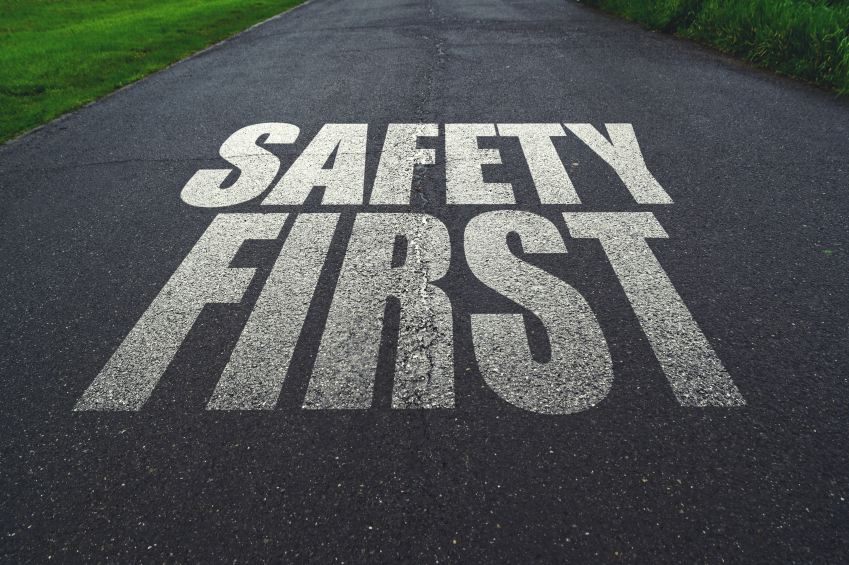It’s lunch time here at the cubicle farm and I’m distracted while trying to come up with a clever subject for this week’s blog. I have three, seriously three, colleagues sitting near me clearing their throats every 30 seconds or so. Not in time or anything synchronized because that would be very funny. I don’t even think they are aware of it. It’s cold and flu season and any variety of the plague is coursing through the office and a certain amount of phlegm should be expected. Though, I think one of the guys, he doesn’t know it, may suffer from congestive heart failure and every half minute needs to clear his throat to annoy me before he dies.
So I put on both of my ear buds and turned the volume up on a live Who concert from 1968. Half way through the show a song called “A Quick One While He’s Away” is running through its eight minute rock mania and Daltrey starts wailing “you are forgiven, you are forgiven, you are forgiven…” and it hits me. I want to tell you all about Safety Culture. It has been the advent in aviation and medicine, seriously improving our ability to make humans live a little longer. I think the tenets of it could be useful in everyone’s workplace.
“People make errors, which lead to accidents. Accidents lead to deaths. The standard solution is to blame the people involved. If we find out who made the errors and punish them, we solve the problem, right? Wrong. The problem is seldom the fault of an individual; it is the fault of the system. Change the people without changing the system and the problems will continue.” – Don Norman (Author, “The Design of Everyday Things”)
So what does safety culture mean? Simply, it’s doing the right thing even when no one is watching. You all recognize that doctors, pilots and air traffic controllers are fundamentally safe. It’s our nature, our calling, to do what we do as well as we can and safely. A critical aspect of this system is “just” culture or as I like to think of it, ‘no blame’ game. Now let me make it clear, this does not excuse reckless behavior. Reckless behavior or purposeful negative behavior is always to be dealt with. A safe and just culture is the creation of shared beliefs around organizational factors to create more effective practices. In my aviation experience we have very good examples of how effective this is, but couldn’t you use this concept in other professions?
In medicine this cultural shift has some very strong support and one of my favorite proponents is Dr. Brian Goldman. There is a fantastic TED Talk you can find on YouTube or TED called “Doctors Make Mistakes. Can We Talk About That?” He advocates creating a safe environment where mistakes can be discussed in order to learn and make adjustments to improve chances of good outcomes. This Canadian doctor also has a podcast/radio show where he emphasizes this idea.
Safety Culture in 5 easy steps:
1. Build core values and shared beliefs to capture your organizational elements (i.e. policies and procedures). It is developed by the entire workforce giving wisdom of ownership to each employee. An informed workforce is your strength.
2. Correct vulnerabilities quickly. It improves employee engagement if a problem is identified and corrections are made rapidly to reduce risk. It’s a positive feedback loop.
3. Employees at all levels feel equally confident stopping exposure to risk. Whether it is patient care, moving aircraft across the sky or a program or project happening in your workplace, if everyone feels comfortable and has a mechanism to report risk the outcome is often better.
4. Employees are assured that while they will be held accountable for their actions, they will be treated fairly. Blame isn’t directed at the employee, instead system causes are investigated. Identify practices which put the organization at risk then establish accountability. When no one is blamed engaged employees will reveal organizational weaknesses which lead to positive solutions. This creates a just culture. If employees live in fear of discipline it will lead to under-reporting of risk to whatever system you are working in.
5. Leaders have the best opportunity to create good safety culture throughout the organization, but it’s an engaged workforce that fuels its success.
It really is easier said than done, but if you have an environment that would be welcome to cultural shift there is a lot of information on the web. Now how do I apply this to my mucus induced croakers? “All is forgiven, all is forgiven… “ Turn it up higher.
Michael Hannigan is part of the GovLoop Featured Blogger program, where we feature blog posts by government voices from all across the country (and world!). To see more Featured Blogger posts, click here.




Leave a Reply
You must be logged in to post a comment.